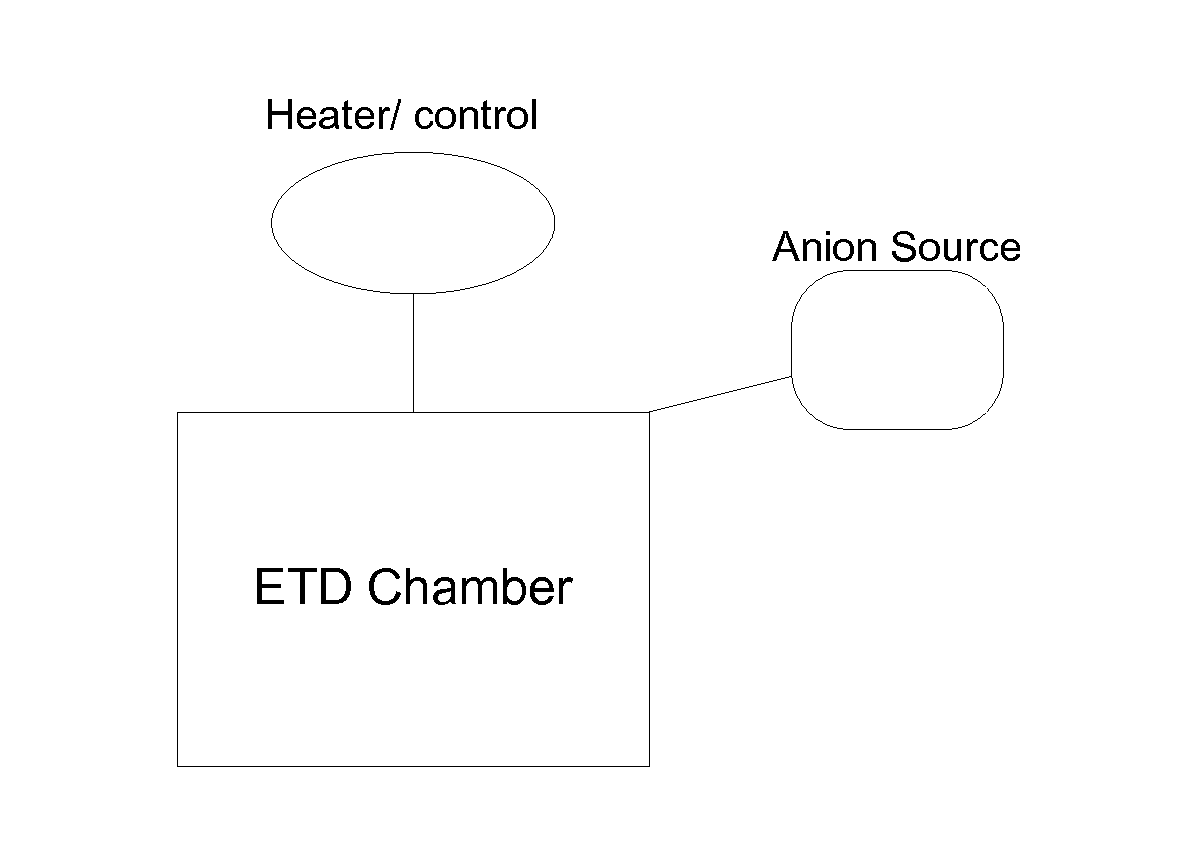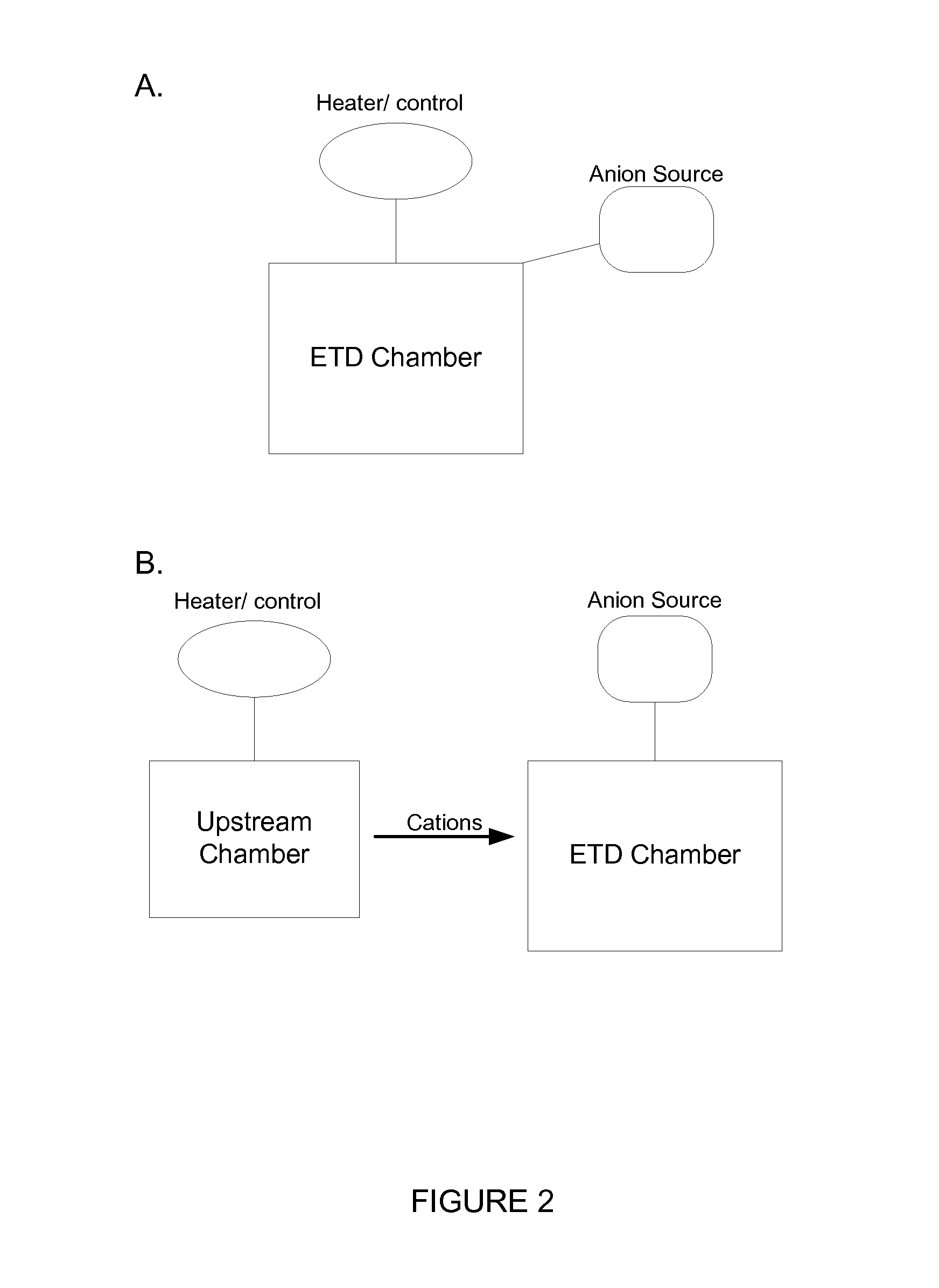Efficient electron transfer dissociation for mass spectrometry
a mass spectrometry and electron transfer technology, applied in the field of mass spectrometry electron transfer dissociation efficient, can solve the problems of radio frequency (rf) electrostatic field remains a significant technical challenge, the technique is difficult to implement in ion guides and ion traps, and the proposal to circumvent this problem has been largely unsuccessful
- Summary
- Abstract
- Description
- Claims
- Application Information
AI Technical Summary
Benefits of technology
Problems solved by technology
Method used
Image
Examples
Embodiment Construction
[0012] The present invention provides, inter alia, methods and devices for fragmenting analyte ions more efficiently with ETD by controlling the temperature of the analyte ions. Thus, some embodiments provide a method for fragmenting analyte ions by electron transfer dissociation, comprising establishing an internal temperature of the analyte ions using a heater and control system, and contacting the resulting analyte ions with anions in a reaction chamber for electron transfer dissociation. Some other embodiments provide an apparatus for fragmenting analyte ions using electron transfer dissociation, comprising a heater and control system for establishing an internal temperature of the analyte ions; and a reaction chamber for fragmenting the resulting analyte ions, wherein the fragmenting is performed by electron transfer dissociation. Mass spectrometer systems comprising such an apparatus are also provided.
[0013] The details of one or more embodiments of the invention are set fort...
PUM
| Property | Measurement | Unit |
|---|---|---|
| temperature | aaaaa | aaaaa |
| temperature | aaaaa | aaaaa |
| temperature | aaaaa | aaaaa |
Abstract
Description
Claims
Application Information
 Login to View More
Login to View More - R&D
- Intellectual Property
- Life Sciences
- Materials
- Tech Scout
- Unparalleled Data Quality
- Higher Quality Content
- 60% Fewer Hallucinations
Browse by: Latest US Patents, China's latest patents, Technical Efficacy Thesaurus, Application Domain, Technology Topic, Popular Technical Reports.
© 2025 PatSnap. All rights reserved.Legal|Privacy policy|Modern Slavery Act Transparency Statement|Sitemap|About US| Contact US: help@patsnap.com



